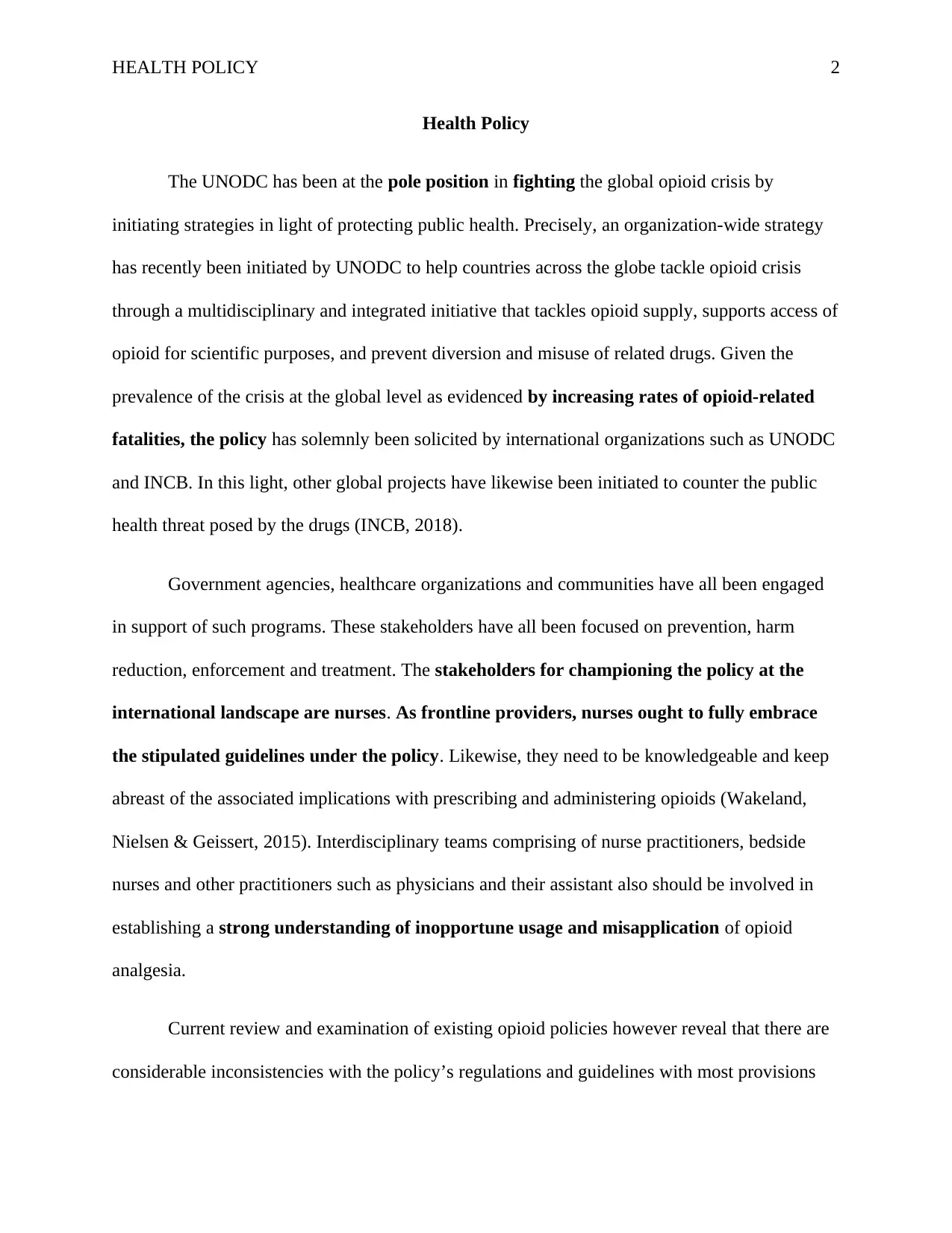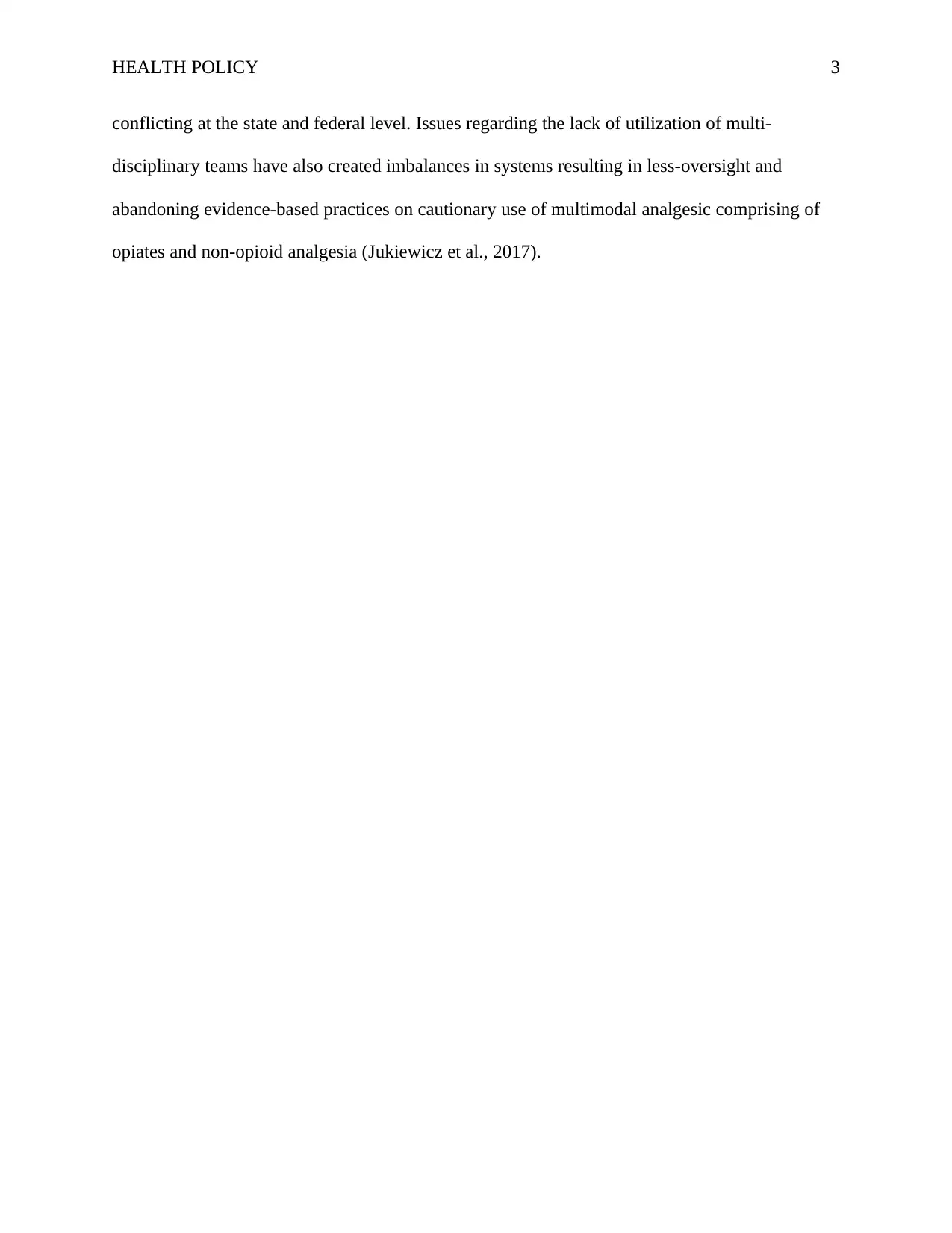Health Policy Report: Analysis of Opioid Crisis and Global Strategies
VerifiedAdded on 2022/12/23
|4
|483
|100
Report
AI Summary
This report analyzes the global health policy response to the opioid crisis, focusing on the initiatives of the UNODC and other international organizations. It examines strategies aimed at tackling the opioid crisis through a multidisciplinary approach, including addressing supply, supporting access for scientific purposes, and preventing misuse. The report highlights the involvement of various stakeholders, such as government agencies, healthcare organizations, and nurses, emphasizing the critical role of nurses in implementing and understanding these policies. It also discusses the inconsistencies in current opioid policies and the need for improved utilization of multidisciplinary teams to ensure evidence-based practices and better patient outcomes. The report references key publications, including those from the International Narcotics Control Board (INCB) and research on opioid use and nursing perspectives.
1 out of 4






![[object Object]](/_next/static/media/star-bottom.7253800d.svg)